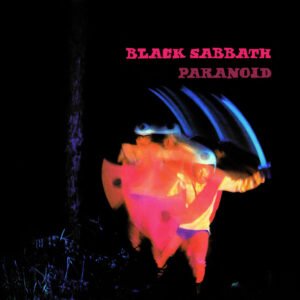Vertigo Records, founded in 1969 as a subsidiary of Philips Records, quickly became synonymous with progressive and hard rock. The label’s distinctive “swirl” logo—an eye-catching black-and-white spiral design—appeared on its earliest releases, making these records instantly recognizable.
Beyond aesthetics, Vertigo’s swirl-label era represents a golden age of experimentation in rock music, featuring groundbreaking artists who pushed sonic boundaries. These records have since become highly collectible, not only for their musical significance but also for their scarcity, unique packaging, and superior pressing quality. Today, original Vertigo Swirl albums are among the most sought-after vinyl treasures in the world of record collecting.
History of Vertigo Swirl Labels
Vertigo Records was established in 1969 by Philips Records as an outlet for the rising wave of progressive rock, hard rock, and experimental music. At the time, major labels were hesitant to take risks on unconventional artists, and Vertigo filled that gap by signing boundary-pushing acts.
From its inception, the label became known for its bold musical choices and striking visual identity, with the swirling black-and-white label design becoming a hallmark of its early releases. However, the swirl era was short-lived—by 1973, Vertigo phased out the design in favor of a new “spaceship” label. This limited production window has made original Vertigo Swirl pressings highly collectible, with some albums commanding premium prices due to their rarity and historical importance.
Key Features of the Swirl Label
The Vertigo Swirl label is instantly recognizable due to its striking black-and-white spiral design, which gives the illusion of movement when the record spins. This psychedelic aesthetic perfectly complemented the experimental nature of the music released under the label.
Beyond the label itself, packaging played a major role in Vertigo’s appeal. Many releases featured lavish gatefold sleeves with intricate artwork, often created by renowned designers like Marcus Keef. These covers weren’t just promotional tools—they were extensions of the music, enhancing the listening experience.
In addition to standout visuals, Vertigo prioritized high-quality pressings. UK editions, in particular, were known for their superior mastering and heavyweight vinyl, ensuring excellent sound fidelity. This attention to detail has made original Vertigo Swirl records both sonically and visually coveted by collectors worldwide.
Rarity and Scarcity
One of the biggest reasons Vertigo Swirl records are so collectible is their limited production run. With the swirl label only used between 1969 and 1973, original pressings were never mass-produced in the way later releases were. Many albums had small initial pressings, making surviving copies especially rare today.
Adding to their scarcity, several Vertigo releases were commercial failures at the time, leading to low sales and limited reissues. However, as musical tastes evolved, many of these overlooked albums—by bands like Cressida, Gracious, and Affinity—became cult classics, driving demand for the original vinyl.
Furthermore, country-specific variations exist, with UK pressings generally being the most valuable. German, Italian, and other European editions often had minor differences in artwork, track listings, or mastering quality, adding another layer of collectibility for serious vinyl enthusiasts.
Artist and Album Significance

The Vertigo Swirl era produced some of the most influential and collectible rock albums of the late ’60s and early ’70s. Among the most famous releases are Black Sabbath’s self-titled debut (1970) and “Paranoid” (1970)—both cornerstone albums in heavy metal history. Other major acts on the label included Uriah Heep, Gentle Giant, and Colosseum, all of whom played key roles in shaping progressive and hard rock.
Beyond these well-known names, Vertigo also housed lesser-known yet highly prized bands such as Cressida, Gracious, and Affinity. These groups, while not commercially successful at the time, crafted intricate and forward-thinking albums that have since gained cult followings. Due to their low original pressings and limited reissues, some of these albums have become holy grails for collectors, commanding high prices on the vinyl market.
Market Value and Collectibility
Original Vertigo Swirl records are among the most valuable vinyl collectibles, with prices ranging from hundreds to several thousand dollars depending on the title and condition. Certain albums, like Black Sabbath’s debut or Cressida’s “Asylum”, can fetch premium prices, particularly if they are first pressings in excellent or mint condition.
Several factors influence a record’s value, including rarity, demand, pressing variations, and overall condition. First pressings with original gatefold sleeves, lyric inserts, and unblemished swirl labels are the most sought-after. Collectors also prize records with low spindle wear and clean vinyl surfaces, as many of these albums were heavily played when released.
The collector market remains strong, with increasing interest from vinyl enthusiasts and investors alike. Prices continue to climb, particularly for rare titles that have never been reissued on vinyl, making Vertigo Swirl records a highly desirable and appreciating asset in the world of record collecting.
